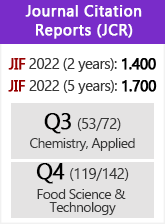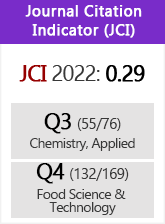The adipose tissue: something more than a reservoir of energy
DOI:
https://doi.org/10.3989/gya.043209Keywords:
Adipokines, Brown adipose tissue, Temperature regulation, White adipose tissueAbstract
Adipose tissue is a reservoir of energy and also an organ that contributes to the aesthetics and health of human body working as an endocrine tissue. White adipose tissue, which is formed by unilocular adipose cells, can modify organic homeostasis by controlling energy expenditure and consumption and by producing adipokines that regulate food consumption, and carbohydrate and lipid metabolic utilization. Brown adipose tissue is structured by multilocular cells containing many small fat drops that can be easily hydrolyzed. This tissue is involved in adaptative or facultative thermogenesis because it contains the uncoupling-1 protein (UCP-1) which by inhibiting ATP synthesis releases heat. The size of brow adipose tissue is reduced with aging and the most recent future strategies to fight obesity may be by transforming white cells into brown adipose tissue. The present work reviews the main structural and functional characteristics of white and brown adipose tissue with emphasis in its endocrine and regulatory function.
Downloads
References
Aerts JM, Ottenhoff R, Powlson AS, Grefhorst A, van Eijk M, Dubbelhuis PF, Aten J, Kuipers F, Serlie MJ, Wennekes T, Sethi JK, O’Rahilly S, Overkleeft HS. 2007. Pharmacological inhibition of glucosylceramide synthase enhances insulin sensitivity. Diabetes 56,1341-1349. doi:10.2337/db06-1619 PMid:17287460
Argyropoulos G, Harper ME. 2002. Uncoupling proteins and thermoregulation. J. Appl. Physiol. 192, 2187- 2198.
Asakura H. 2004. Fetal and neonatal thermoregulation. J. Nippon. Med. Sch. 71, 360-370 doi:10.1272/jnms.71.360 PMid:15673956
Bakker AH, Van Dielen FM, Greve JW, Adam JA, Buurman WA. 2004. Preadipocyte number in omental and subcutaneous adipose tissue of obese individuals. Obes. Res. 12, 488-498. doi:10.1038/oby.2004.55
Bianco AC, Silva JE. 1987. Optimal response of key enzymes and uncoupling protein to cold in BAT depends on local T3 generation.Am. J. Physiol. 253, E309-315.
Bhakoo O. 1974. Minimal rates of oxygen comsumption in small for dates during the first week of life. Arch. Dis. Child. 49, 583-590. doi:10.1136/adc.49.7.583 PMid:4408316 PMCid:1648917
Bergman RN, Ader M. 2000. Free fatty acids and pathogenesis of type 2 diabetes mellitus. Trends. Endocrinol. Metab. 11, 351-356. doi:10.1016/S1043-2760(00)00323-4 PMid:11042464
Brun LD, Gagne C, Julien P, Tremblay A, Moorjani S, Bouchard C, Lupien PJ. 1989. Familial lipoprotein lipaseactivity deficiency: study of total body fatness and subcutaneous fat tissue distribution. Metabolism 38, 1005-1009. doi:10.1016/0026-0495(89)90013-9 PMid:2796749
Cannon B, Nedergaard J. 2004. Brown adipose tissue: function and physiological significance. Physiol. Rev. 84, 277-359. doi:10.1152/physrev.00015.2003 PMid:14715917
Cinti S. 2005. The adipose organ. Prostaglandins Leukot. Essent. Fatty Acids 73, 9-15. doi:10.1016/j.plefa.2005.04.010
Cinti S, Mitchell G, Barbatelli G, Murano I, Ceresi E, Faloia E, Wang S, Fortier M, Greenberg AS, Obin MS. 2005. Adipocyte death defines macrophage localization and function in adipose tissue of obese mice and humans. J. Lipid. Res. 46, 2347-2355. doi:10.1194/jlr.M500294-JLR200
Cinti S. 2006. The role of brown adipose tissue in human obesity. Nutr. Metab. Cardiovasc. Dis. 16, 569-574. doi:10.1016/j.numecd.2006.07.009
Cowley MA, Smart JL, Rubinstein M, Cerdán MG, Diano S, Horvath TL, Cone RD, Low MJ. 2001. Leptin activates anorexigenic POMC neurons through a neural network in the arcuate nucleus. Nature 411, 480-484. doi:10.1038/35078085 PMid:11373681
Djian P, Phillips M, Green H 1985. The activation of specific gene transcription in the adipose conversion of 3T3 cell. J. Cell. Physiol. 124, 554-556. doi:10.1002/jcp.1041240327 PMid:4044664
Entingh AJ, Taniguchi CM, and Kahn CR. 2003. Bi-directional regulation of brown fat adipogenesis by the insulin receptor. J. Biol. Chem. 278, 33377-33383. doi:10.1074/jbc.M303056200 PMid:12807888
Farmer SR. 2006. Transcriptional control of adipocyte formation. Cell. Metab. 4, 263-273. doi:10.1016/j.cmet.2006.07.001 PMid:17011499,PMCid:1958996
Garaulet M, Hernandez-Morante JJ, Lujan J, Tebar FJ, Zamora S. 2006. Relationship between fat cell size and number and fatty acid composition in adipose tissue from different fat depots in overweight/obese humans. Int. J. Obes. 30, 899-905. doi:10.1038/sj.ijo.0803219 PMid:16446749
Geloen A, Roy PE, Bukowiecki LJ. 1989. Regression of white adipose tissue in diabetic rats. Am. J. Physiol. 257, E547-553.
Gillum RF. 1987. The association of body fat distribution with hypertension, hypertensive heart disease, coronary heart disease, diabetes and cardiovascular risk factors in men and women aged 18-79 years. J. Chronic. Dis. 40, 421-428. doi:10.1016/0021-9681(87)90175-5 PMid:3494034
Green H, Kehinde O. 1975. An established preadipose cell line and its differentiation in culture. II. Factors affecting the adipose conversion. Cell 5, 19-27. doi:10.1016/0092-8674(75)90087-2 PMid:165899
Gregoire FM, Smas CM, Sul HS. 1998. Understanding adipocyte differentiation. Physiol. Rev. 78, 783-809.
Gregoire FM. 2001. Adipocyte differentiation: from fibroblast to endocrine cell. Exp. Biol. Med. 226, 997-1002.
Halliwell KJ, Fielding BA, Samra JS, Humphreys SM, Frayn KN. 1996. Release of individual fatty acids from human adipose tissue in vivo after an overnight fast. J. Lipid. Res. 37, 18421848.
Hausman GJ. 1987. Identification of adipose tissue primordial in perirenal tissues of pig fetuses:utility of phosphatase histochemistry. Acta Anat. 128, 236-242. doi:10.1159/000146345
Hausman GJ, Hausman DB. 2006. Search for the preadipocyte progenitor cell. J. Clin. Invest. 116, 3103-3106. doi:10.1172/JCI30666 PMid:17143324,PMCid:1679717
Hager A. 1977. Body fat and adipose tissue cellularity in infants. Metabolism 2, 607-614. doi:10.1016/0026-0495(77)90082-8 PMid:859445
Herman MA, Kahn BB. 2006. Glucose transport and sensing in the maintenance of glucose homeostasis and metabolic harmony. J. Clin. Invest. 116, 1767-1775. doi:10.1172/JCI29027 PMid:16823474,PMCid:1483149
Henry BA, Clarke IJ. 2008. Adipose tissue hormones and the regulation of food intake. J. Neuroendocrinol. 20, 842-849. doi:10.1111/j.1365-2826.2008.1730.x PMid:18601708
Hesselink MKC, Mensink M, Schrauwen P. 2003. Human uncoupling protein-3 and obesity: an update. Obes. Res. 11, 1429-1443. doi:10.1038/oby.2003.192
Hirsh J, Batchelor B. 1976. Adipose tissue cellularity in human obesity. J. Clin. Endocrinol. Metab. 5, 299-311. doi:10.1016/S0300-595X(76)80023-0 PMid:1085232
Kim JK, Gavrilova O, Chen Y, Reitman ML, Shulman GI. 2000. Mechanism of insulin resistance in A-ZIP/F-1 fatless mice. J. Biol. Chem. 275, 8456-8460. doi:10.1074/jbc.275.12.8456 PMid:10722680
Kowenz-Leutz, E. and Leutz A. 1999. A C/EBP beta isoform recruits the SWI/SNF complex to activate myeloid genes. Mol. Cell. 4, 735-743 doi:10.1016/S1097-2765(00)80384-6 PMid:10619021
Kuk JL, Ross R. 2009. Influence of sex on total and regional fat loss in overweight and obese men and women. Int J. Obes. 33, 629-634 doi:10.1038/ijo.2009.48 PMid:19274055
Lekstrom-Himes J, Xanthopoulos KG. 1998. Biological role of the CCAAT/enhancer-binding protein family of transcription factors. J. Biol. Chem. 273, 28545- 28548. doi:10.1074/jbc.273.44.28545 PMid:9786841
Mandrup S, Lane MD. 1997. Regulating adipogenesis. J. Biol. Chem. 272, 5367-5370. doi:10.1074/jbc.272.9.5367 PMid:9102400
Mattsson C, Olsson T. 2007. Estrogens and glucocorticoid hormones in adipose tissue metabolism. Curr. Med. Chem. 14, 2918-2924. doi:10.2174/092986707782359972 PMid:18045137
Mauriège P, Imbeault P, Langin D, Lacaille M, Alméras N, Tremblay A, Després JP. 1999. Regional and gender variations in adipose tissue lipolysis in response to weight loss. J. Lipid. Res. 40, 1559-1571.
Medina-Gomez G, Gray SL, Yetukuri L, Shimomura K, Virtue S, Campbell M, Curtis RK, Jimenez-Linan M, Blount M, Yeo GS, Lopez M, Seppänen-Laakso T, Ashcroft FM, Oresic M, Vidal-Puig A. 2007. PPAR gamma 2 prevents lipotoxicity by controlling adipose tissue expandability and peripheral lipid metabolism. PLoS Genet. 3 (4) e64. doi:10.1371/journal.pgen.0030064 PMid:17465682,PMCid:1857730
Miner JL. 2004. The adipocyte as an endocrine cell. J. Anim. Sci. 82, 935-941.
Morrison RF, Farmer SR. 2000. Hormonal signaling and transcriptional control of adipocyte differentiation. J. Nutr. 130, 3116S-3121S
Murphy KG, Bloom SR. 2006. Gut hormones and the regulation of energy homeostasis. Nature 444, 854-859. doi:10.1038/nature05484 PMid:17167473
Qi Y, Takahashi N, Hileman SM, Patel HR, Berg AH, Pajvani UB, Scherer PE, Ahima RS. 2004. Adiponectin acts in the brain to decrease body weight. Nat. Med. 10, 524-529. doi:10.1038/nm1029 PMid:15077108
O’Shea M, Hansen MJ, Tatemoto K, Morris MJ. 2003. Inhibitory effect of apelin-12 on nocturnal food intake in the rat. Nutr. Neurosci. 6, 163-167. doi:10.1080/1028415031000111273 PMid:12793520
Poissonnet CM, Burdi AR, Garn SM. 1984. The chronology of adipose tissue appearance and disturbance in human fetus. Early Hum. Dev. 10, 1-11 doi:10.1016/0378-3782(84)90106-3 PMid:6499712
Price W. 1994. Determinants of fetal and neonatal growth. Curr. Opin. Pediatr. 6, 135-141. doi:10.1097/00008480-199404000-00003 PMid:8032392
Ranganathan G, Unal R, Pokrovskaya I, Yao-Borengasser A, Phanavanh B, Lecka-Czernik B, Rasouli N, Kern PA. 2006. The lipogenic enzymes DGAT1, FAS, LPL in adipose tissue: effects of obesity, insulin resistance and TZD treatment. J. Lipid. Res. 47, 2444- 2450. doi:10.1194/jlr.M600248-JLR200
Richon VM, Lyle RE, McGehee RE. 1997. Regulation and expression of retinoblastoma proteins p107 and p130 during 3T3-L1 adipocyte differentiation. J. Biol. Chem. 272, 10117-10124. doi:10.1074/jbc.272.15.10117 PMid:9092557
Ronti T, Lupattelli G, Mannarino E. 2006. The endocrine function of adipose tissue: an update. Clin Endocrinol 64, 355-365.
Rosen ED, Walkey CJ, Puigserver P, Spiegelman BM. 2000. Transcriptional regulation of adipogenesis. Genes Dev. 14, 1293-1307.
Rosen ED, MacDougald OA. 2006. Adipocyte differentiation from the inside out. Nat. Rev. Mol. Cell. Biol. 7, 885-896. doi:10.1038/nrm2066 PMid:17139329
Salans LB, Cushman SW, Weismann RE. 1973. Studies of human adipose tissue: adipose cell size and number in nonobese and obese patients. J. Clin. Invest. 52, 929-941 doi:10.1172/JCI107258 PMid:4693656,PMCid:302341
Sethi JK, Vidal-Puig AJ. 2007. Adipose tissue function and plasticity orchestrate nutritional adaptation. J. Lipid. Res. 48, 1253-1262. doi:10.1194/jlr.R700005-JLR200
Shao D, Lazar MA. 1997. Peroxisome proliferator activated receptor and CCAA T/enhancer-binding protein and cell cycle status regulate the commitment to adipocyte differentiation. J. Biol. Chem. 272, 21473- 21478. doi:10.1074/jbc.272.34.21473 PMid:9261165
Shklyaev S, Aslanidi G, Tennant M, Prima V, Kohlbrenner E, Kroutov V, Campbell-Thompson M, Crawford J, Shek EW, Scarpace PJ, Zolotukhin S. 2003. Sustained peripheral expression of transgene adiponectin offsets the development of diet-induced obesity in rats. Proc. Natl. Acad. Sci. 100, 14217-14222. doi:10.1073/pnas.2333912100
Spiegelman BM, Frank M, Green H. 1983. Molecular cloning of mRNA from 3T3 adipocytes. Regulation of mRNA content for glycerophosphate dehydrogenase and other differentiation-dependent proteins during adipocyte development. J. Biol. Chem. 258, 10083- 10089.
Stephenson T, Budge H, Mostyn A, Pearce S, Webb R and Symonds ME. 2001. Fetal and neonatal adipose maturation: a primary site of cytokine and cytokine-receptor action. Biochem. Soc. Trans. 29, 80-85. doi:10.1042/BST0290080 PMid:11356132
Straczkowski M, Kowalska I, Baranowski M, Nikolajuk A, Otziomek E, Zabielski P, Adamska A, Blachnio A, Gorski J, Gorska M. 2007. Increased skeletal muscle ceramide level in men at risk of developing type 2 diabetes Diabetologia. 50, 2366-2373. doi:10.1007/s00125-007-0781-2 PMid:17724577
Symonds ME, Bryant MJ, Clarke L, Darby CJ, Lomax MA. 1992. Effect of maternal cold exposure on brown adipose tissue and thermogenesis in the neonatal lamb. J. Phys. 455, 487-502.
Subramanian V, Rothenberg A, Gomez C, Cohen AW, Garcia A, Bhattacharyya S, Shapiro L, Dolios G, Wang R, Lisanti MP, Brasaemle DL. 2004. Perilipin A mediates the reversible binding of CGI-58 to lipid droplets in 3T3-L1 adipocytes. J. Biol. Chem. 279, 42062- 42071. doi:10.1074/jbc.M407462200 PMid:15292255
Tchkonia T, Giorgadze N, Pirtskhalava T, Tchoukalova Y, Karagiannides I, Forse RA, DePonte M, Stevenson M, Guo W, Han J, Waloga G, Lash TL, Jensen MD, Kirkland JL. 2002. Fat depot origin affects adipogenesis in primary cultured and cloned human preadipocytes. Am. J. Physiol. Regul. Integr. Comp. Physiol. 282, R1286-R1296.
Tovar S, Nogueiras R, Tung LY, Castañeda TR, Vázquez MJ, Morris A, Williams LM, Dickson SL, Diéguez C. 2005. Central administration of resistin promotes short-term satiety in rats. Eur. J. Endocrinol. 153, R1- R5. doi:10.1530/eje.1.01999 PMid:16131594
Trayhurn P. 2005. The biology of obesity. Proc. Nutr. Soc. 64, 31-38. doi:10.1079/PNS2004406 PMid:15877920
Tschöp M, Heiman ML. 2001. Rodent obesity models: an overview. Exp. Clin. Endocrinol. Diabetes 109, 307- 319. doi:10.1055/s-2001-17297
Unger RH. 1995. Lipotoxicity in the pathogenesis of obesity- dependent NIDDM. genetic and clinical implications. Diabetes 44, 863-870. doi:10.2337/diabetes.44.8.863 PMid:7621989
Vague J. 1947. La différentiation sexuelle, facteur déterminant des formes de l’obésité. Presse Med 30, 339- 340.
Valet P, Tavernier G, Castan-Laurell I, Saulnier-Blache JS, Langin D. 2002. Understanding adipose tissue development from transgenic animal models. J. Lipid. Res. 43, 835-860.
Downloads
Published
How to Cite
Issue
Section
License
Copyright (c) 2009 Consejo Superior de Investigaciones Científicas (CSIC)

This work is licensed under a Creative Commons Attribution 4.0 International License.
© CSIC. Manuscripts published in both the printed and online versions of this Journal are the property of Consejo Superior de Investigaciones Científicas, and quoting this source is a requirement for any partial or full reproduction.All contents of this electronic edition, except where otherwise noted, are distributed under a “Creative Commons Attribution 4.0 International” (CC BY 4.0) License. You may read here the basic information and the legal text of the license. The indication of the CC BY 4.0 License must be expressly stated in this way when necessary.
Self-archiving in repositories, personal webpages or similar, of any version other than the published by the Editor, is not allowed.
















